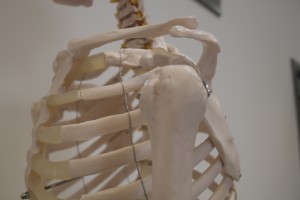Shoulder instability (Glenohumeral instability)

Rehab training for the problem
Description of shoulder instability
Shoulder instability is a common problem. Usually (90% of cases) show up as anterior instability, but instability in other directions can also occur. The structure of the shoulder joint predisposes instability because the acetabulum of the joint (joint socket) is very small and hollow and points forward and outward. In addition, the strength of the muscles responsible for outward rotational movement in the joint clearly outweigh the muscular capacity of the inwardly rotating muscles, which means that instability in forward, inward, and downward direction is frequent.
Instability can be divided into acute and reoccurring dislocation. Most acute injuries happen when the arm is in 90 ° abduction and outward rotation – often seen in connection with e.g. handball. Factors that determine the stability of the shoulder can be grouped into anatomical conditions, static stability (ligaments), and dynamic stability (muscles), and can all lead to instable shoulder.
Symptoms of shoulder instability
- Uncomfortable clicking or clonking from the shoulder at certain movements.
- Possible dead arms sensation.
- Weakness
- Diffuse aches in the shoulder region.
- Pain at the back of the joint and in the posterior stabilizing muscles.
- Possible sensation of loosening in the shoulder.
- Anterior dislocation.
Examination for shoulder instability
- Movement test.
- Sulcus test.
- Skuffe test.
- Load og Shift test.
- Muscle stability test.
Treatment for shoulder instability
- Rehab training of active stability.
- Kinesiology tape

Social Medier